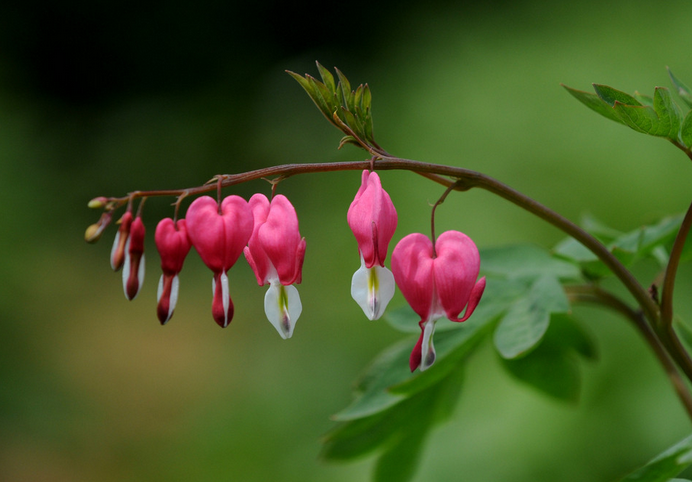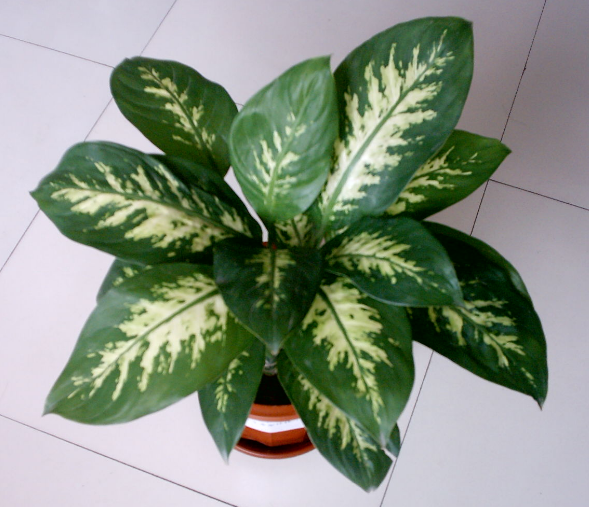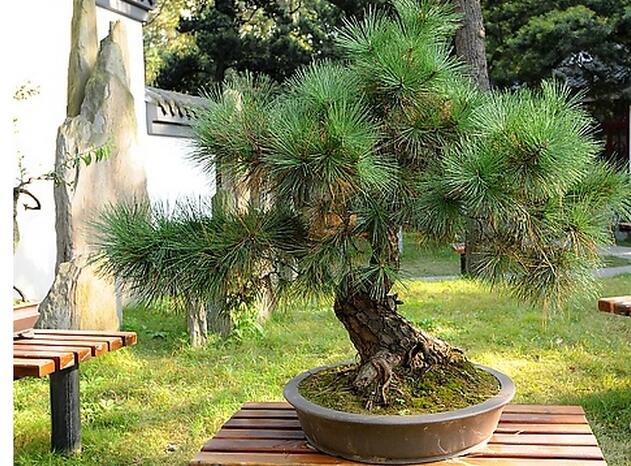Seven wonderful ways to keep the Admiralty upside down to raise beautiful potted plants
Hanging Admiralty upside down is a kind of flower that is very prone to diseases and insect pests, so special attention should be paid to the prevention and control of diseases and insect pests in maintenance. So if you want to raise a luxuriant inverted golden bell, how to maintain the inverted golden bell? Next, let the editor who decorates the network give you a brief introduction.

Seven wonderful ways to keep the Admiralty upside down to raise beautiful potted plants
1. Grey mold
Botrytis cinerea occurs in rainy weather or when there is too much nitrogen fertilizer or not enough light. It mainly harms stems, leaves and flowers, resulting in water-like spots on the affected parts. If it is not prevented in time, the hyphae will gradually expand and be covered with gray hairs, and in serious cases, the plants will die.
Solution: at the initial stage of the disease, 65% zinc or 50% carbendazim and other new agents with 500 times solution were sprayed every 7 to 10 days, continuously for 3 times, and pay attention to ventilation and light, so as to make the plant grow well and improve the plant's disease resistance. After the disease, the diseased branches and leaves should be cut off and treated in time to reduce the source of the disease.
2. Powdery mildew
Powdery mildew mainly harms stems, leaves and buds. After being infected, there is a layer of white powder on the surface, which shrinks the leaves and makes the flowers smaller.
Solution: pay attention to ventilation and light, increase the application of phosphorus and potassium fertilizer, improve plant disease resistance. After the onset of the disease, spray 70% Tuobu body liquid or 2500 times liquid strychnine or other appropriate agents in time, spray every 10 days, spray 2 times 3 times continuously.
3. Root rot
Root rot is a physiological disease, which often occurs in too much watering or continuous rainy days and hot summer, resulting in hypoxia, causing root blackening and rot, light branches and leaves wilting, and severe death of the whole plant.
Solution: after the onset of the disease, irrigate the rhizosphere soil with 50% of 300-fold solution in time. At the same time, pay attention to ventilation and cooling in summer, and basin soil watering should not be too much.
4. Fusarium wilt
Solution: 1000-fold solution of 10% antimicrobial agent 401 was applied to soil control.
5. Rust
Solution: spray control with 20% withered rust EC 400 times.
6. Whitefly
White whitefly mainly harms the tender leaves of the golden bell and absorbs mesophyll juice; after hatching, the nymphs are fixed on the back of the leaves, piercing and sucking, causing the leaves to curl and dry up. In addition, the honeydew secreted by whitefly can easily cause soot disease after contaminating the leaves.
Solution: spray 1000 times of omethoate or 2000 times of chlorhexidine in time when insect pests are found. Spray once every 7 days, spray for 3 or 4 times in a row, pay attention to both the positive and negative sides of the blade.
7. Aphids, red spiders
Aphids, red spiders and other pests mainly absorb leaves, buds and flower leaves, affecting the normal growth and development, and the whole plant dies in serious cases.
Solution: spray with 1, 000 times dimethoate solution, 10% dimethoate solution or 2000 times aphid pine solution.
Seven wonderful ways to keep the Admiralty upside down to raise beautiful potted plants
How to keep the golden bell hanging upside down? Upside-down Admiralty Culture method and maintenance course
Admiralty hanging upside down, also known as lantern flower, hanging bell begonia, 50 ∽ 200cm high, petal color, purple, red, pink, white, florescence longer 4 ∽ 12 months. The flower that hangs the golden bell upside down is open, the flower pattern is peculiar, suit potted culture, often use to decorate balcony, sitting room, study and so on, also can hang up maintenance to watch. The following editor will talk to you about the breeding methods and maintenance points of the upside-down Admiralty.
Environment
Hanging upside down Jinzhong prefers a cool, humid environment, slightly cold-resistant and cold-resistant, afraid of high temperature and strong summer light, and avoid hot and stuffy heat and rain and sun.
Soil.
Admiralty upside down likes loose, fertile, well-drained soil rich in humus. Potted plants can be mixed with peat soil, rotten leaf soil and river sand.
Light
Hanging Admiralty upside down likes the semi-overcast environment, so the lighting should be different according to the season. Full sunshine is needed in winter, early spring and late autumn, half-day sunshine is needed in early summer and early autumn, sunshade is needed in summer, water can be sprayed on the leaf surface and the ground, water is sprayed on the ground to cool down and increase air humidity.
Water and fertilizer
The upside-down golden bell grows fast, the number of flowering times is many and the flowering period is long, and the growth period can be applied once a month with thin cake fertilizer or compound fertilizer, and the basin soil should be dry before fertilization; spray water with a fine sprinkler after fertilization to prevent the leaves from rotting with fertilizer and water. Watering to keep the basin soil moist, avoid stagnant water will rot roots in summer, and control water in winter.
Temperature.
The growth temperature of Admiralty hanging upside down is 10 ∽ 28 degrees. Dry, cool and semi-overcast conditions are required in summer, and the air humidity is maintained. When the temperature reaches 30 degrees, it grows slowly, and when 35 degrees, it will cause a large number of plants to wither and die. Pay attention to cooling precautions. Winter requires warm and humid, sunny and well-ventilated; when the temperature is below 5 degrees, pay attention to keep warm and prevent frost damage.
These are the maintenance points of the upside-down Admiralty Bell arranged by the editor of Huinong net. Finally, the editor also reminds you that you must pay attention to the ventilation problem when raising the Admiralty bell upside down. Poor ventilation is prone to disease!
Key points of maintenance of the four seasons of Admiralty upside down
Admiralty hanging upside down, alias hanging Zhong Begonia, Lantern Begonia, hanging Zhong Mei, etc., for the sallow family upside down Admiralty belongs to evergreen sub-irrigation. The height of the potted plant is 250.45 cm. Simple leaves opposite or tricuspidate. Flower solitary stem end leaf axil, flower stalk long and drooping, its horticultural varieties, plant height, calyx, petals and other types of changes are very great. The colors of flowers are white, pink, red and so on. The petals are rich in color, including white, pink, pink, rose, purple, blue and so on. Common are upper umbrella upside down hanging golden bell, long tube upside down hanging golden bell, white calyx golden bell in full bloom, like hanging color lanterns, lovely, for the public reception of small flowers and plants.
Upside down Admiralty originated in Peru, Zhiyi and other places. Sexual preference for cool, damp and semi-overcast conditions. Avoid high temperature and extreme heat in summer and avoid exposure to the scorching sun. The development most conforms to the temperature lO~25 degrees, when the temperature exceeds 30 degrees, it is extremely unlucky for the development, showing a semi-dormant state, and the winter ability is 5 degrees low. Should be rich in humus, well-drained fertile sandy loam.
The breeding of Admiralty upside down is mainly by cutting. The life of cuttings in spring is strong, so it is not suitable to perish in summer. The temperature of the cuttings is kept at 15 ~ 20 degrees, and the cuttings are about lO centimeters long. after cutting, they are placed in a shaded place and you can take root in half a month.
The main points of 04:00 maintenance of hanging Admiralty upside down are as follows:
1. The cuttings were planted in a small flowerpot with a diameter of about lO~l2 cm in spring. The basin and soil should be mixed with 5 parts of rotten leaf soil, 3 parts of garden soil and 2 parts of river sand, and a little rotten cake fertilizer should be used as the base fertilizer. Pour water into the pot and put the seedlings more slowly in the shade. Gradually see the light in about a week. It takes over plenty of light in early spring and shades around noon in late spring. Watering should be dry and wet. After potting, 5~lO applied light liquid fertilizer twice, and when the seedling reached lO centimeter high, the coring was removed again after its branches grew to 3-4 nodes, each plant preserved 5-7 branches, so that the plant was full and flowered more.
- Prev

What are the functions of indoor pot culture of flower and leaf evergreen
Evergreen is a famous variety of evergreen. It is an elegant indoor foliage plant with unique leaf pattern. It is also one of the most popular indoor foliage plants. Nowadays, many people breed evergreen at home. So what is the role of evergreen?
- Next

Pinus massoniana bonsai maintenance skills new skills get
With the improvement of living standards, people are particularly fond of plants in this information age. People are really fed up with facing the computer every day, so it's a good choice to have a plant during the break. Do you know Masson Pine? What are its characteristics? What are the techniques for the maintenance of Masson Pine bonsai? Next
Related
- Fuxing push coffee new agricultural production and marketing class: lack of small-scale processing plants
- Jujube rice field leisure farm deep ploughing Yilan for five years to create a space for organic food and play
- Nongyu Farm-A trial of organic papaya for brave women with advanced technology
- Four points for attention in the prevention and control of diseases and insect pests of edible fungi
- How to add nutrient solution to Edible Fungi
- Is there any good way to control edible fungus mites?
- Open Inoculation Technology of Edible Fungi
- Is there any clever way to use fertilizer for edible fungus in winter?
- What agents are used to kill the pathogens of edible fungi in the mushroom shed?
- Rapid drying of Edible Fungi

